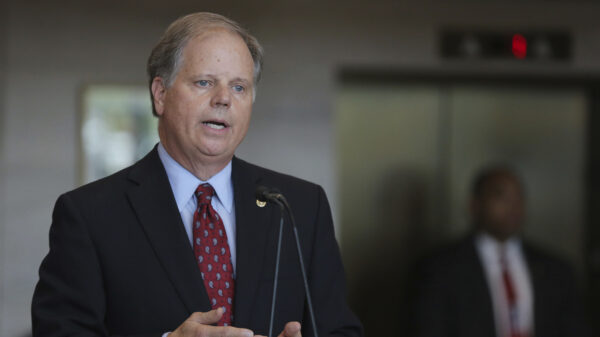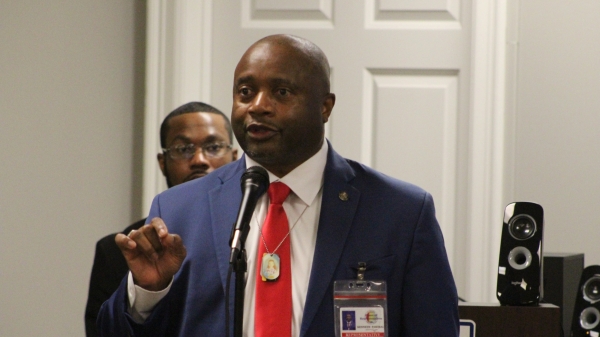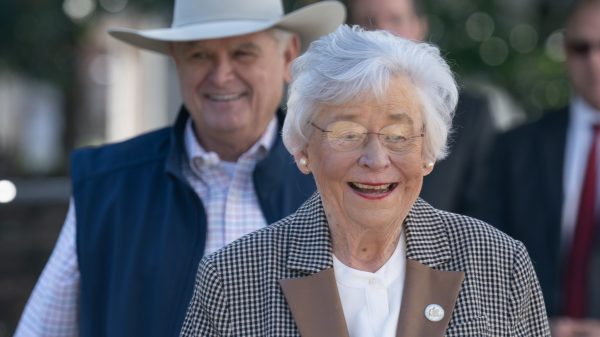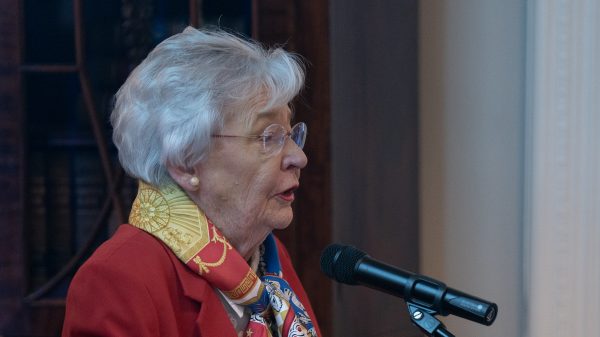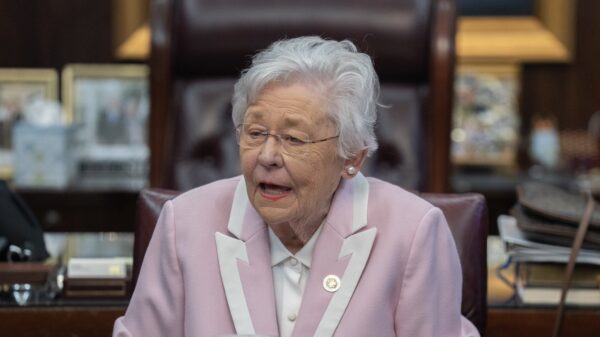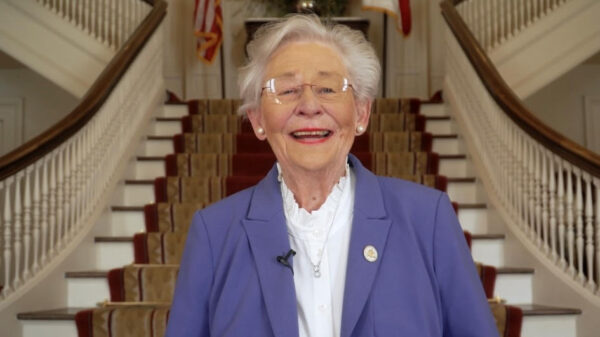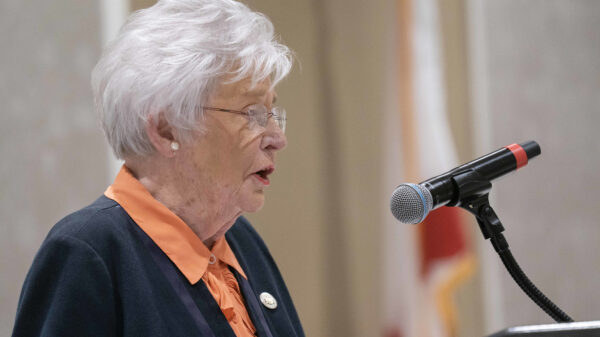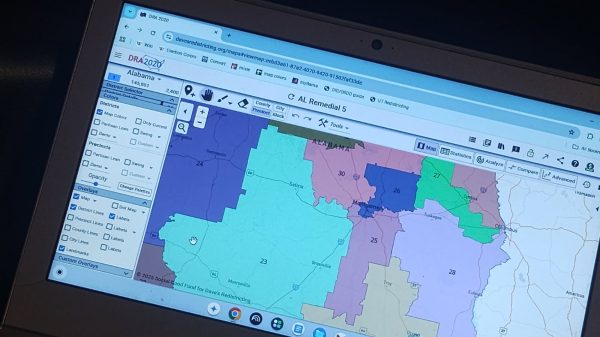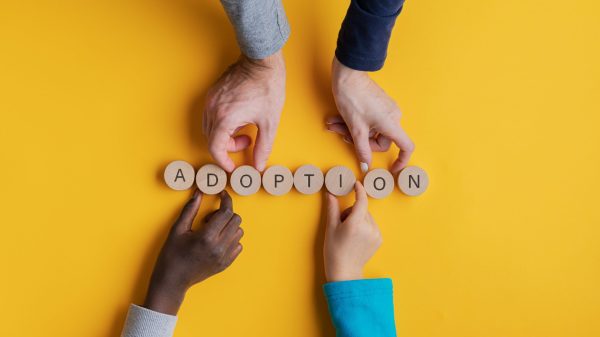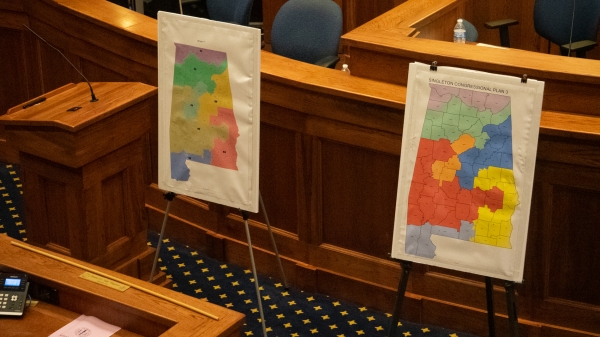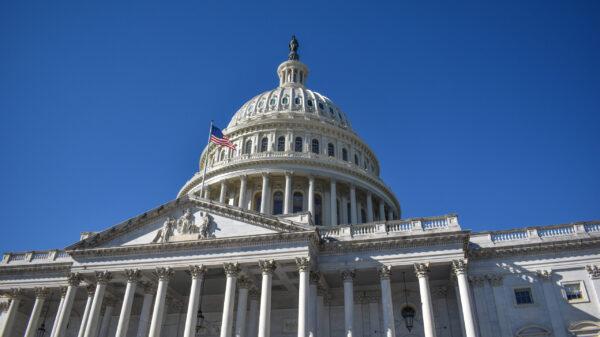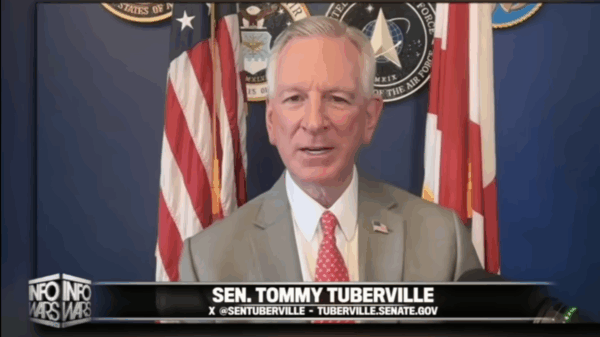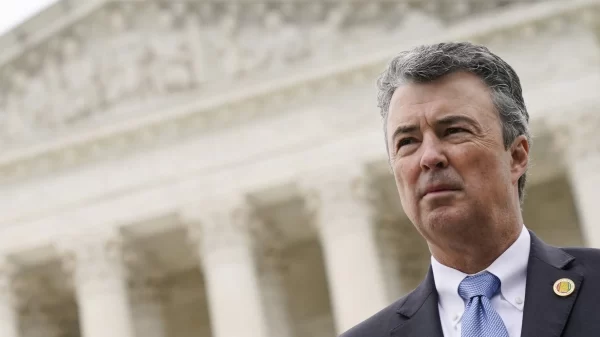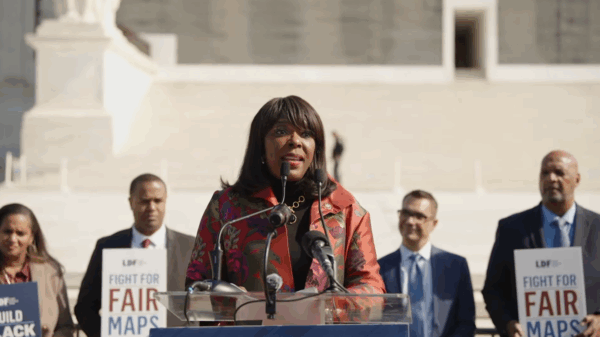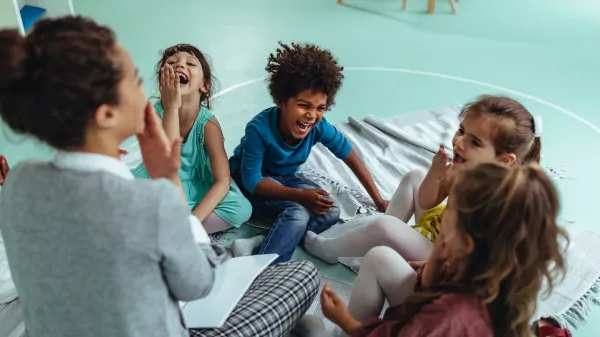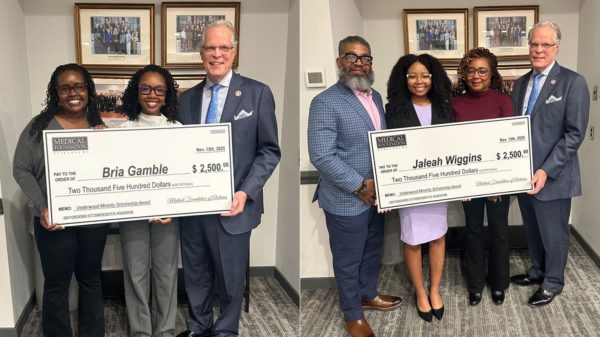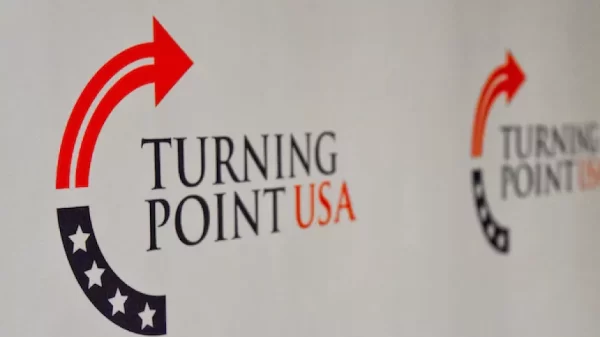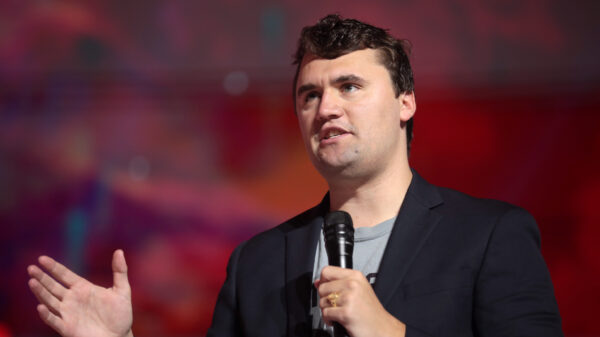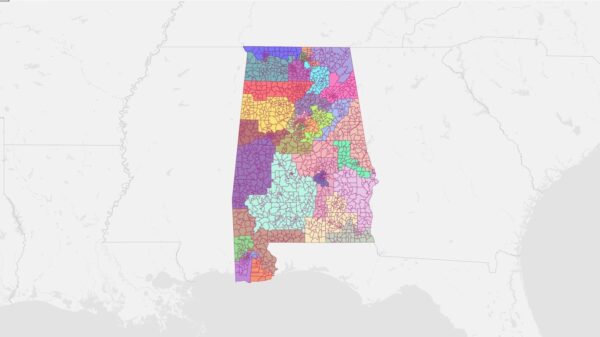Amid multiple high-profile incidents of extremist political violence across the U.S. in recent months, Cynthia Miller-Idriss has called on Americans to take a deeper look at how political rhetoric and disinformation fuel extremism.
Miller-Idriss, a professor at American University’s School of Public Affairs and School of Education, Justice Law and Criminology, is the founding director of the school’s Polarization and Extremism Research and Innovation Lab and current chief vision officer of the initiative.
PERIL, alongside partners such as the Southern Poverty Law Center and Institute for Strategic Dialogue provides guidance on preventative approaches to stopping radicalization and violent extremism through strengthening community resilience.
The professor’s work has highlighted the ideological roots of political violence in which divisive rhetoric has led to tragic consequences, including recent attacks in Minnesota and Colorado.
Miller-Idriss is the author of numerous books on the roots and spread of violent extremism, including, “Hate in the Homeland: The New Global Far Right,” “The Extreme Gone Mainstream: Commercialization and Far Right Youth Culture in Germany” and “Gender and the Radical and Extreme Right: Mechanisms of Transmission and The Role of Educational Interventions.”
Her upcoming book, “Man Up: The New Misogyny and the Rise of Violent Extremism”—set to be released in September, analyzes case studies of misogynistic strategies that have been used to reassert traditional patriarchy and have increasingly been seen in incidents of violent anti-immigrant, antisemitic and Islamophobic extremism.
Miller-Idriss emphasized how the emergence of the internet has opened new roads for men and boys to be integrated into extremist ideologies that seek to militantly police gender norms, when asked how she believes misogyny has evolved over recent decades.
“I use the term misogyny, you know, in a broader way than most people use it,” Miller-Idriss said. “Colloquially, it’s understood as hatred of women. I think that’s not what it is. It’s too narrow.”
“It’s more like gender policing—the policing of norms and expectations. And so, in that sense, it’s something that is enacted by women as well as by men and often enacted on boys and men when they are not adhering to the expected norm,” she continued.
“[Misogyny is] not new. And in fact, in many ways, as I talk about throughout the book, there’s been tremendous progress on changes,” Miller-Idriss said. “When I talk about the new misogyny, it’s it is really some of the same old ideas about the policing of the patriarchy and these norms and expectations, but packaged in different forms.”
Topics addressed in Miller-Idriss’s upcoming book include the emergence of cyber-stalking, revenge porn and online influencers who offer content or subscription courses aimed at policing standards of masculinity and femininity.
The author explained that many young men and boys become introduced to extremist beliefs through self-guided self-help searches that begin online. While this search begins for most as an attempt to improve their physical fitness, financial or romantic success or confidence, it often draws them to online spaces or influencers that garner followings and financial gain by telling young men their manhood is under attack.
“Often it does make their life better in one of those three areas, but it comes with the scapegoating of women, and then sometimes of immigrants and others,” Miller-Idriss said. “Feminists and women get blamed for some of the real or perceived grievances that boys and men are facing, and then they’re also used to lash out against others in this protective way.”
Miller-Idriss explained that understanding how to prevent the spread of misogynist beliefs, increasingly spread over the internet, can also help prevent intimate partner violence, as well as further radicalization, or mass violence.
“One of the things I argue in the book is that, you know, 60% of mass shooters have a history of domestic and intimate partner violence. You have all these warning signs and precursors that come out that doesn’t even count, things like stalking and harassment or rape threats or sexual assault or anti LGBTQ issues,” she said. “If you look at all of those things as a precursor, even when the target is someone totally different, there may be ways to prevent some of that escalation of violence by addressing these earlier warning signs.”
She pointed to acts of terror such as the attack on anti-racist protesters at the 2017 Unite the Right Rally in Charlottesville and the 2017 shooting incident at Comet Ping Pong pizzeria in Washington D.C., an attack inspired by the “pizzagate” conspiracy theory; both of which she said indicate the dangers of rhetoric which calls for the need to protect whiteness and traditional gender roles from feminism or cultural others.
“This kind of narrative of needing to protect and that comes through in conspiracy theories like the great replacement, which are, you know, antisemitic. ‘It’s Jews controlling immigration in order to replace white civilizations,’ for example,” said Miller-Idriss. “But they’re also anti-woman and anti-feminist, because they are about birth rates—white birth rates and the control of reproduction.”
Miller-Idriss explained, although these attacks were rooted in conspiracies, their growing online and real-life popularity indicate genuine crises being faced by men and boys.
“I think you have to acknowledge there is a crisis for boys and men in a lot of ways, in terms of labor market outcomes, much reduced higher education attendance, like three-quarters of the deaths of despair,” she said. “Suicide rates, depression, anxiety are all much higher than they are for women, and there’s a loneliness, you know, epidemic that is well documented, with 50 percent of American men saying their online lives are more rewarding than their offline lives.”
Miller-Idriss first became interested in extremism as a German studies student writing her dissertation on the German education system’s apprenticeship programs. Similar to the largely online development of extremism today, Miller-Idriss explained the growth of neo-Nazism in the late 1900s and early 2000s found its roots in economic and social frustrations of young boys and men.
“It’s accidental area of expertise,” she said of her beginnings as an extremism researcher. “I was interested in working class youth, and particularly working-class boys’ transitions to adulthood who don’t go to college, and Germany has this robust apprenticeship system that like two-thirds of youth at that time were going through and being trained for three or four years, but they don’t go to college.”
“What happened was, I landed in the field to do research in those schools for 18 months in Berlin and around Berlin, right at a time of an upsurge in right wing extremism, neo-Nazism, anti-Semitism, and particularly among the construction trade youth,” she continued.
Miller-Idriss said, at the time of her dissertation, up to 80 percent of the young men enrolled in the work apprenticeship program she was studying in were in some degree engaged in Germany’s burgeoning neo-Nazi subculture.
“The teachers were very invested that period of time in working out ways to counter and challenge neo-Nazism, antisemitism, etcetera. And so, I became this accidental expert in school-based responses to resurgent forms of hate,” Miller-Idriss said.
“About 95% of the 3 billion Euro that they put into this type of prevention goes into primary prevention. The U.S. focuses almost exclusively on secondary prevention, which is security-based approaches law enforcement,” she said.
The professor said learning to integrate primary prevention, civic education, digital literacy and democratic strengthening as means of fighting violent extremism and hateful rhetoric in the U.S. served as the basis of PERIL’s mission.
Combatting gender and sexuality-based extremism became the focus of PERIL and the SPLC’s most recent collaboration: a guide called “Not Just a Joke: Understanding Gender- & Sexuality-Based Bigotry,” which was released last December. The guide to early intervention against extremist beliefs marked the third installment of a series of educational resources developed between PERIL and SPLC, aimed at helping caregivers, community leaders and educators learn how to work against young people’s integration into divisive ideologies.
Miller-Idriss said the two organizations first began producing resources on combatting extremism in response to the beginning the COVID-19 pandemic.
“I was tremendously worried about, knowing what we know online, about how much harmful content was circulating, and seeing all teenagers move online and feeling like parents weren’t going to be aware of what was about to happen,” she said.
Miller-Idriss explained PERIL and SPLC, since then, have sought to address the most prominent extremist rhetoric, which is often adopted by or marketed to young people.
“Each year of our work together, we have evolved and into thinking about what does the field need? What do communities need?” she said.
“We started fielding so many requests in the lab for help in middle schools and high schools around issues of gender and misogyny,” Miller-Idriss said. “Communities were asking for support and resources to counter what, you know, originally began as a sort of Andrew Tate effect, although that was a few years ago.”
Miller-Idriss emphasized, however, that divisive rhetoric which has at its worst inspired mass casualties is not limited to influencers or online spaces, but increasingly being co-opted by prominent political and cultural leaders.
The professor has been outspoken about the dangerous potential of divisive political rhetoric.
During an appearance on PBS NewsHour, Miller-Idriss cited the June assassination of state Rep. Melissa Hortman, D-Minnesota, and her husband as examples of the destructive potential of a political climate where leaders increasingly seek votes by villainizing their opponents.
“It’s a playbook that has been successful in drawing voters by making them afraid of the other and positioning the other as an existential threat,” she explained. “We keep seeing, you know, the use of this polarizing us-versus-them, existential threat rhetoric as, unfortunately, a successful, successful model.”
“Until someone figures out a better way to draw voters, I think that this keeps happening because it works,” Miller-Idriss continued. “It works, but it damages democracy.”
The professor also underscored the importance of media literacy for all age groups, arguing that parents and caretakers may also fall down extremist rabbit holes online, often driven by a misplaced desire to protect their families.
For instance, she pointed to legitimate incidents of sexual abuse committed by members of the Catholic Church, the Boy Scouts and high-profile cases, such as that of Jeffrey Epstein and Penn State football coach Jerry Sandusky, as catalysts for rhetoric that castigates the LGBTQ+ community.
“There’s this false diversion of what are very real concerns into a scapegoated group, the LGBTQ community, as groomers, or also anyone who is, you know, allowing a child to, you know, a 16 year old boy to check out a book from a library about it, right, labeling them as groomers and pedophiles too,” Miller-Idriss said. “They want to feel like they have control, that they can keep their kids safe and that makes them more easily persuaded by bad actors online who are manipulating, I think, a lot of people into understanding things that are just not true.”
“That kind of impulse to be a hero is so easily manipulated by bad actors, and so we’ve seen that happen again and again,” she continued.
Identifying the root causes of and ways to prevent conspiratorial or divisive extremist beliefs from evolving into hateful rhetoric of political violence serve as focus of Miller-Idriss’s research and PERIL’s mission.
“The question for me is, how do people get persuaded by propaganda that diverts them from a very real concern into a false, you know, totally false understanding of what and where the problems are,” she said.
Miller-Idriss emphasized the importance of PERIL’s work as not just a means of trying to stop extremism’s growth but also attaching root causes that make communities and individuals vulnerable to it.
“It’s not all prevention. Some of it is also strengthening of resilience and community cohesion,” she said. “After five years, we have this proof of concept that we have a lot of evidence that communities want ways to prevent violence and that there are ways that work. And so, we’re now in a phase of scaling up.”




